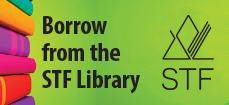Accounting 10, 20, 30
Course Configurations
ACCT31D
Module 31D: Inventory Valuation (Optional)
Outcome
Examine different inventory valuation methods.
Indicators
| (a) | Define terms related to pricing of inventory such as stock record, stock ledger, Last-In, Last-Out(LILO), and First-In, First-Out (FIFO). |
| (b) | Distinguish between periodic and perpetual inventory and explain the conditions under which each type of inventory may be advantageous. |
| (c) | Identify accounts affected by merchandise inventory, and used in calculating cost of goods sold. |
| (d) | Examine merchandise included in counting inventory (e.g., merchandise in transit, merchandise on consignment). |
| (e) | Describe and calculate three methods of valuing merchandise inventory including First-In, First-Out (FIFO), Last-In, Last-Out (LILO) and Weighted Average. |
| (f) | Differentiate between three methods (i.e., First-In, First-Out [FIFO], LastIn, Last-Out [LILO] and Weighted Average) for valuing inventory when reporting net income and total assets. |
| (g) | Examine the effects of increasing and decreasing market prices on inventory values. |
Loading...


R104104
Century 21 Accounting: Multicolumn Journal. Working Papers, Chapters 18-24(Eleventh edition)
This is a non-reproducible student resource that has end-of-lesson, end of-chapter and reinforcement activities, as well as chapter study guides that complement the corresponding textbook chapters. It includes worksheets for capitol growth and development, assets, depreciation, and intangible assets, inventory, accruals, deferrals and reversing entries, end-of-fiscal work for corporations, accounting for partnerships, and worksheets for recording international and internet sales.

R103903
Century 21 Accounting: General Journal(11th ed.)
This student resource is divided into 24 chapters that have the following subsections: 21st Century Skills, Critical Thinking Activities, Think Like an Accounting, Financial Literacy, Global Awareness, Ethics in Action, Forensic Accounting, Careers in Accounting and Accounting in the Real World. This resource promotes problem solving, discussion and creative thinking while building knowledge of accounting practices. One of the main differences between this and other common textbooks for accounting is that it introduces journalizing through the use of a general journal, not a combination journal. Special journals are still used in the textbook. Overall, the textbook would be appropriate for all three course levels.
(More information)

R010486
Cornerstones of Financial Accounting(Third Canadian Edition)
This comprehensive student resource has 13 chapters that provides accounting information, definitions, summaries and exercises in each chapter. Case studies provide examples of how accounting decisions impact real world businesses. Due to the high ratio of text in this resource, it may be most suitable as a teacher resource for enrichment activities for intermediate or advanced high school students.

R002683
Accounting 101: From Calculating Revenues and Profits to Determining Assets and Liabilities, an Essential Guide to Accounting Basics
This book is organized into seven chapters that introduce topics and basic accounting terms using accessible language. This resource provides interesting facts and a history of accounting, and includes topics such as accounting scandals, fraud and big companies.

R009355
Financial Accounting(Seventh Canadian Edition)
This resource consists of 10 chapters which contain a variety of information, assignments, activities, projects, ethical questions and business analyses that may be more suitable for accounting students. There are may project ideas located in the Stop + Think, Cooking the Books, and Spotlight on Businesses sections. There is an online component to this resource that offers tutorials, homework and assessment program.



